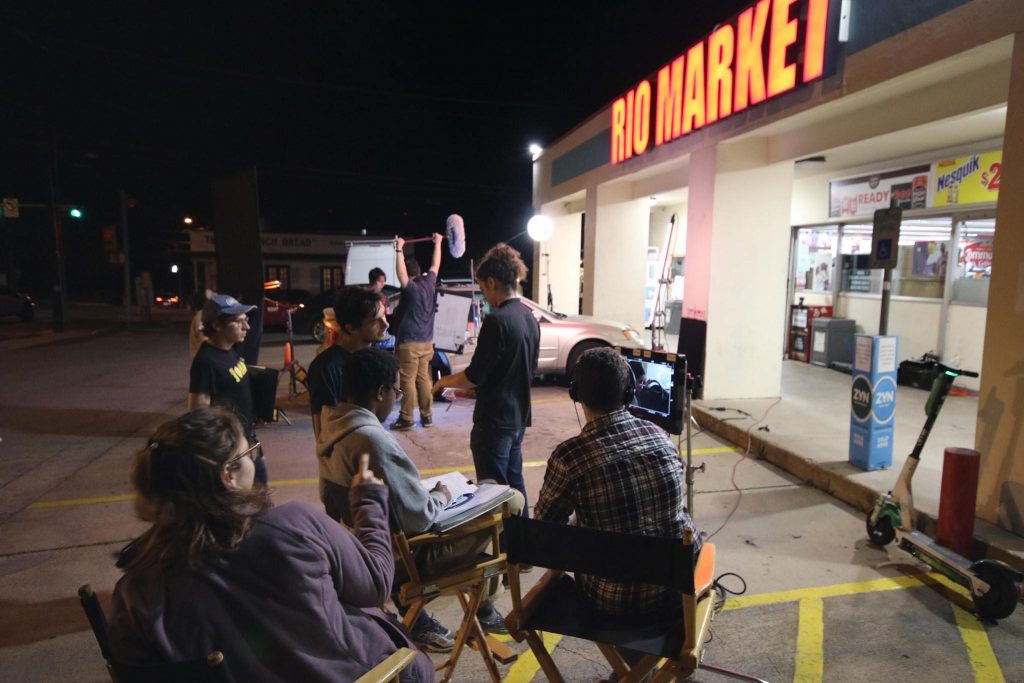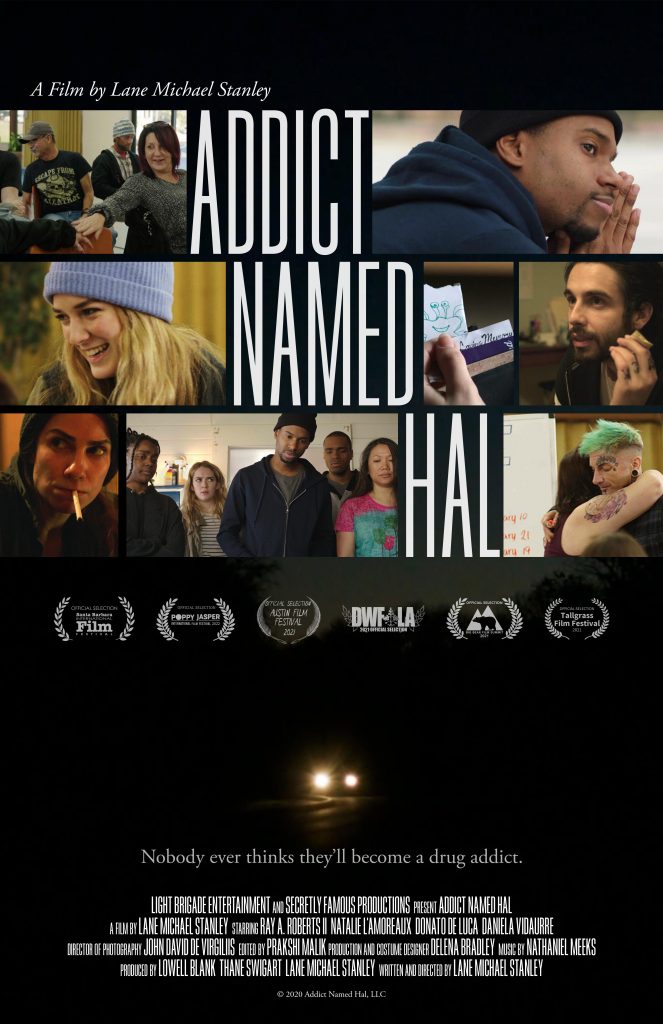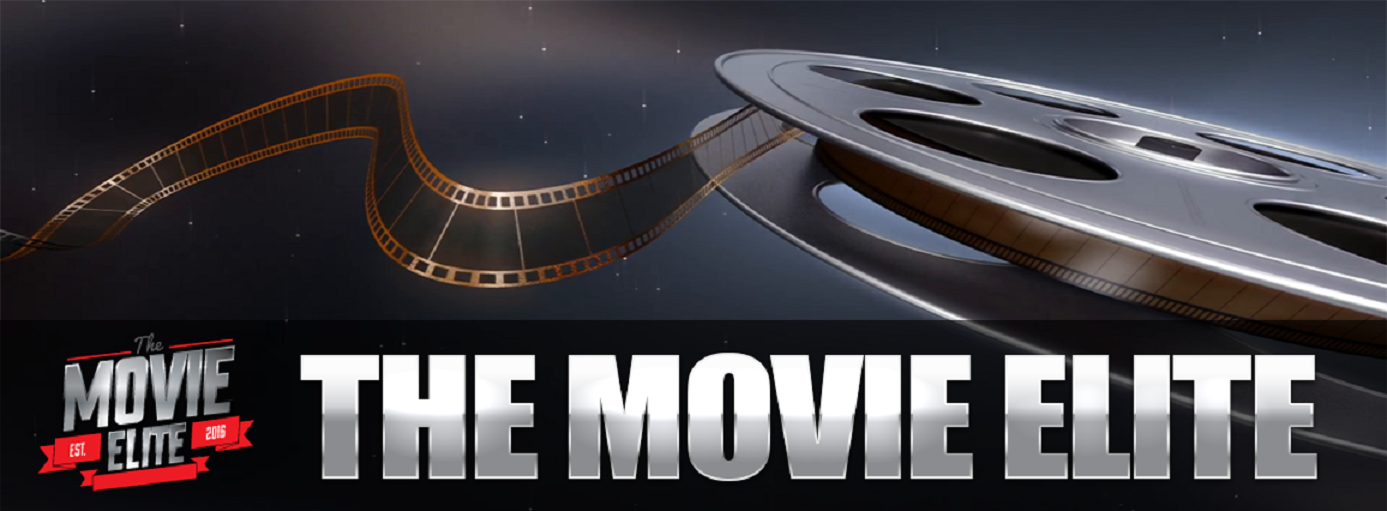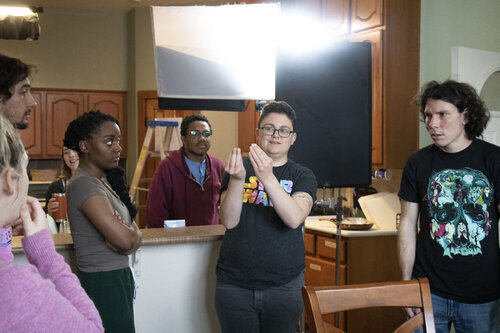Addict Named Hal feels like it comes from a place of experience. It has a very knowing and intimate perspective from the point of view of a recovering addict and addicts in the midst of their addictions. Can you tell me a little bit about your personal history with recovery and how you filtered it through this film?
Addict Named Hal is a very personal story, inspired by my own experiences living in a recovery house when I first got sober. My drinking spiraled out of control after I found my fiance dead of a heart attack in January 2016 – within a few months, my hands were shaking from withdrawals by late morning. I went through inpatient rehab for three weeks and then a recovery house for six months, and I now have 6.5 years sober. The community of recovery I found in those spaces completely saved my life, and this film is dedicated to them.
Â
The location of the recovery center in the movie and the meeting places had a real air of authenticity to them. Where was the movie shot, and how did you approach filming in your locations?
We shot the film in Austin, Texas, and the Austin suburb of Pflugerville. Our cast and crew were very invested in the authenticity of the film. Several actors and our production designer Delena Bradley attended open 12-step meetings to see what these spaces are actually like – often joyful community gatherings, rather than the dim, sad, gray rooms of recovery meetings in most media. Delena did a great job of dressing the space: bringing temporary decorations for the recovery house residents, and dressing down the kitchen of our house to look older than it really was.
Â
The movie has a surprising upbeat tempo and energy for the first half. It’s not really a comedy, but there’s a sort of hopeful and familial texture to the way the movie is made until the latter half when things take a turn. Talk a little bit about how you were able to achieve this generally amiable and agreeable vibe for the movie.
When I first got sober, I was adamant that I would never go to 12-step meetings – even though I had never been to one. Somehow, I had absorbed societal images of recovery spaces as groups of sad, boring people talking about their sad, boring lives. What I discovered could not have been more different – I found a vibrant, irreverent, bold group of humans who had been through hell. Because addiction is so stigmatized, we have to rely on each other for care and accountability. Community is very central to recovery, and 12-step culture can include a lot of tough love and telling it like it is. I wanted to bring this joy and how surprising it can feel to an outsider into the film.
Â

Say something about assembling your cast. For the most part, I’d say you assembled a pretty eclectic set of characters and cast members. Were any of the characters directly inspired by anyone you knew? Were you able to connect your cast to any of those people from your recovery period? How did you prepare your cast to get into the zone of where their characters were supposed to be in terms of emotional and / or physical brokenness?
The characters in the film are amalgamations – so while no one is based on a specific person from my life, they’re an assortment of the “types” of people you might meet in a recovery house. The jock who got hooked on painkillers after a sports injury, the woman who’s cycled between recovery housing and homelessness for the past 20 years, the people coming in from jail and prison. There are as many stories of recovery as there are people in recovery, but I tried to pull out some common themes.
We had an incredible cast, and we worked early on helping them understand the unique dynamics of recovery house relationships. There are all the regular struggles of roommate relationships – times 8 or 10 or 15 roommates. But you also have these elements of shared experience, especially because you might be going to 12-step meetings or outpatient programs together. On the first day of rehearsal, I had the cast go around and introduce themselves with their name and a meaningful identifier, and then share on their lives for three minutes. So, I’m very used to saying “I’m Lane, and I’m an alcoholic” – but the cast could substitute any noun that was important to their identity, like actor, father, bilingual educator, et cetera. Then, they could share (with as much or as little vulnerability as they desired) about their day or their life for 3 minutes, and no matter the emotional nature of the share, the timer would go off after 3 minutes and we would move on to the next person. It’s very rare that a group of people will commit to listening to an individual speak for 3 minutes, and it can be a powerful experience. Just initiating them into the structure of a 12-step meeting, without even having the shared experiences that often accompany substance use disorder, helped them understand how these bonds are different from most.
Â
Talk a little bit about how you connected with your producer Lowell Blank. How did the project coagulate into a moving locomotive from conception to actually going into production?
I’ve known Lowell for a long time – so when he saw I was writing plays toward the end of 2016, he asked if I had thought about screenplays. At that time, I was banging my head against the wall trying and failing to write a recovery house play. When I switched to the film format, I was finally able to achieve the tone and diversity of characters I needed – and out came the first draft (of many!) of ADDICT NAMED HAL.
We worked on the script for several months, with Lowell giving notes on each draft. When it got to a polished enough place, I said that I couldn’t imagine not directing the movie – it was such a personal story, and I wanted to see it through. In an enormous act of grace, Lowell agreed to work with me as a first-time director on the project. I spent the next year directing short films to build up my own experience as well as a reel (and some festival laurels), and then we decided to make HAL on our own. We have since formed a production company and continue to make short and feature films.
Â
Obviously, smaller independent films are always an uphill battle, so say something about some of the most intense challenges you had as a filmmaker in making this film and getting it completed.
A feature film truly takes a village. You end up calling in every favor you can possibly think of – and while that can be draining, it is also incredibly rewarding when your community steps up to make a story possible. We shot in January 2020, just before COVID hit, and I am extremely grateful we were able to get such a smooth shoot in before an extraordinarily difficult time for artists of all kinds.
Â
Addict Named Hal is a very down-to-earth film with a very human approach to drama and relationships. Who is the best audience for this film and what are you planning to do next?
We hope that HAL plays equally well for those who have been through substance use disorder to see stories of hope represented, and for those who do not have direct experience to understand how difficult recovery can be. Early recovery is an extremely tricky time, and because addiction is often portrayed as a moral failing of people who should’ve “just said no,” the resources available can be extremely limited. By telling compassionate stories, we hope to effect change at greater levels.
Lowell and I have now started Secretly Famous Productions, and we are currently making our second feature film, T, which is a narrative film shot incrementally over the lead actor’s first year on Testosterone (think BOYHOOD for gender transition). We are also working on the documentary QUENTIN BLUE, about a band formed in 2014 by men serving life sentences in San Quentin State Prison, and then re-formed when three of them were paroled to the same sober house in Compton, CA in 2020. We also have a slate of projects in development, including a transgender family story set in 1990s San Francisco, a transgender Western, and a restorative justice-fueled crime thriller.



